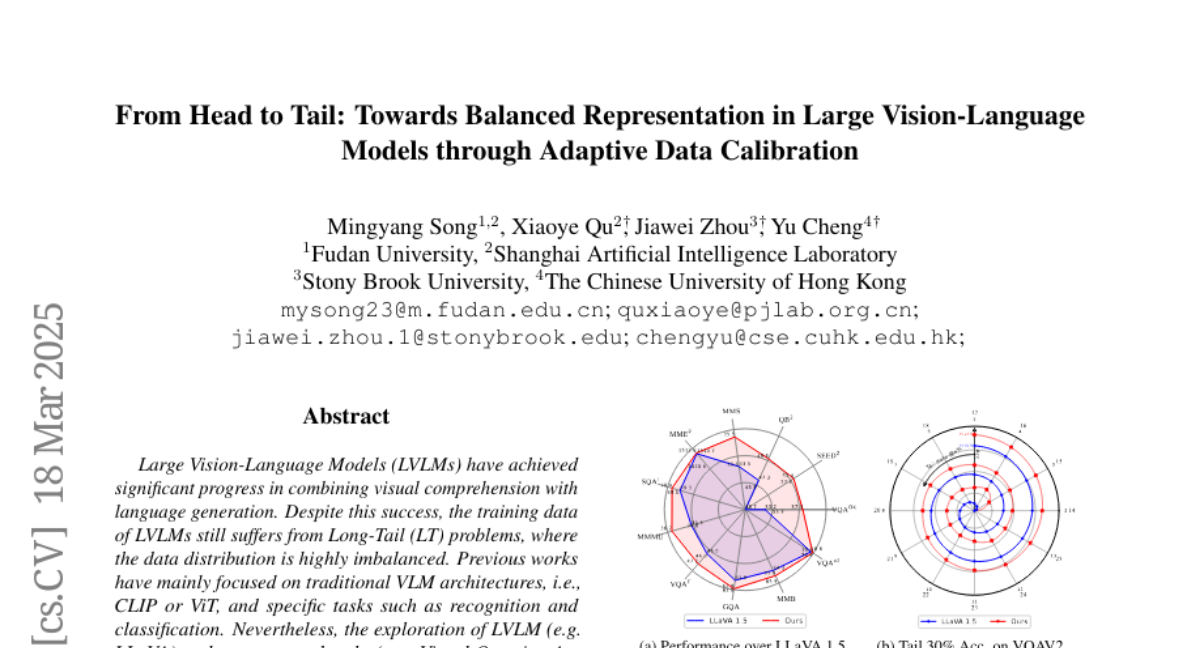From Head to Tail: Towards Balanced Representation in Large Vision-Language Models through Adaptive Data Calibration
Mingyang Song, Xiaoye Qu, Jiawei Zhou, Yu Cheng
2025-03-24

Summary
This paper discusses how to improve AI models that understand both images and language, especially when the training data is unevenly distributed.
What's the problem?
AI models often struggle because they're trained on data where some things are over-represented ('head') and others are under-represented ('tail'), leading to biased results.
What's the solution?
The researchers developed a method to rebalance the training data by reducing the over-represented data and creating more examples of the under-represented data using AI.
Why it matters?
This work matters because it can lead to fairer and more accurate AI models that work better for everyone.
Abstract
Large Vision-Language Models (LVLMs) have achieved significant progress in combining visual comprehension with language generation. Despite this success, the training data of LVLMs still suffers from Long-Tail (LT) problems, where the data distribution is highly imbalanced. Previous works have mainly focused on traditional VLM architectures, i.e., CLIP or ViT, and specific tasks such as recognition and classification. Nevertheless, the exploration of LVLM (e.g. LLaVA) and more general tasks (e.g. Visual Question Answering and Visual Reasoning) remains under-explored. In this paper, we first conduct an in-depth analysis of the LT issues in LVLMs and identify two core causes: the overrepresentation of head concepts and the underrepresentation of tail concepts. Based on the above observation, we propose an Adaptive Data Refinement Framework (ADR), which consists of two stages: Data Rebalancing (DR) and Data Synthesis (DS). In the DR stage, we adaptively rebalance the redundant data based on entity distributions, while in the DS stage, we leverage Denoising Diffusion Probabilistic Models (DDPMs) and scarce images to supplement underrepresented portions. Through comprehensive evaluations across eleven benchmarks, our proposed ADR effectively mitigates the long-tail problem in the training data, improving the average performance of LLaVA 1.5 relatively by 4.36%, without increasing the training data volume.